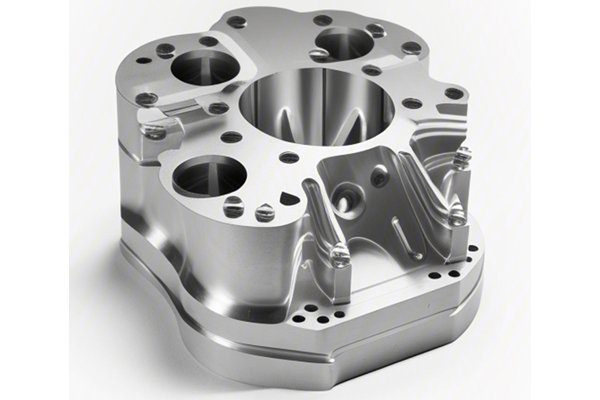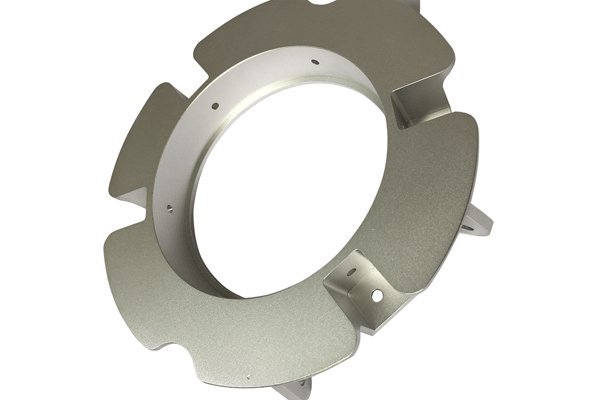Did you know that the global consumer electronics market is expected to exceed $1 trillion by 2024? This phenomenal growth can be attributed to the increasing demand for innovative and efficient devices like smartphones, tablets, and wearables. At the heart of this technological revolution lies an often-overlooked aspect: the materials used in CNC (Computer Numerical Control) processing. In this blog, we will delve deep into the intricacies of choosing the best CNC processing materials for consumer electronics applications, equipping you with the knowledge to make informed decisions.
Understanding CNC Processing in Consumer Electronics
What is CNC Processing?
CNC processing is a manufacturing technique that utilizes computer-controlled machinery to remove material from a workpiece, creating precise components according to a specified design. This technology allows for high efficiency, accuracy, and repeatability, making it ideal for producing small, complex parts found in consumer electronics.
Importance of Material Selection
Selecting the right materials for CNC machining in consumer electronics is essential for the final product’s longevity, reliability, performance, and aesthetics. Different materials display varying properties, including strength, weight, conductivity, and thermal compatibility, impacting the performance of electronic devices.
Key Factors to Consider When Choosing CNC Processing Materials
When selecting materials for CNC processing in consumer electronics, several critical factors must be taken into consideration:
The mechanical properties of a material dictate how it will perform when subjected to stress, strain, temperature, and environmental factors. Key mechanical properties to consider include:
Consumer electronics often generate heat during operation, affecting overall performance and user experience. Therefore, it’s crucial to consider:
The conductivity of a material is critical, particularly in components associated with power transference, circuit boards, and connections. Key electrical properties to evaluate include:
The overall design of consumer electronic devices often strives for weight reduction without compromising performance. Thus, the density and weight of the chosen material become significant. Lightweight materials like plastics may be favored for casings, while denser materials like metals may be used for structural supports or heat sinks.
In addition to functionality, aesthetic appeal plays a significant role in consumer electronics. The chosen material affects the device’s final appearance. Possible considerations include:
Popular Materials for CNC Processing in Consumer Electronics
Metals are frequently used in consumer electronics due to their durability, strength, and thermal conductivity. Some popular choices include:

Plastics are popular for their lightweight and cost-effective properties. Common plastics used include:
Composite materials combine two or more materials to create properties superior to those of the individual constituents. They are increasingly utilized in high-performance electronics for their weight-saving characteristics and mechanical strength.
Advanced ceramics can be applied in electronics for their electrical insulating properties, thermal resistance, and mechanical toughness. These materials are finding applications in capacitors, piezoelectric devices, and other electronic components.
Best Practices for Material Selection
Before making a final decision, prototyping is a vital step. Creating prototypes allows you to evaluate the chosen materials’ performance and characteristics under real-world conditions. CNC prototypes can help identify potential issues before massive manufacturing.
Work closely with material suppliers to gather data on material properties and recommendations. They can provide insights into recent advancements, cost-effectiveness, and performance standards, ensuring you choose a material that suits your specific application.
As manufacturers increasingly strive for environmentally friendly practices, consider using sustainable materials. Eco-friendly alternatives are becoming more available, reducing waste and energy consumption in the production process.
Once components are fabricated, testing their performance in real applications is critical. Iterate the design and material choices based on testing outcomes to optimize quality and performance further.
Emerging Trends in CNC Processing Materials
The landscape of CNC machining materials is continually evolving as technology advances. Here are a few emerging trends to watch:
With rising environmental awareness, bio-based plastics and composites are gaining traction. These materials are derived from renewable sources and offer a sustainable alternative for various electronic components.
The increasing adoption of 3D printing in consumer electronics manufacturing is allowing for innovative material applications. Unique polymers and composites can be utilized for rapid prototyping and production.
Materials that respond dynamically to environmental changes – such as shape memory alloys – are increasingly being integrated into electronic devices, enhancing functionality.
Choosing the right CNC processing materials for consumer electronics applications is a multifaceted endeavor. By considering mechanical properties, thermal characteristics, electrical suitability, weight, aesthetics, and more, companies can ensure their products meet the demands of consumers and perform reliably over time.
As the industry evolves, embracing advancements and trends in material science will be crucial for staying competitive. Thus, exploring sustainable practices and innovative materials will not only benefit manufacturers but will contribute to a greener planet.
Remember, the material choice directly affects consumer satisfaction and product success. By making informed decisions, you can enhance your product’s performance, attractiveness, and ultimately, its success in the highly competitive consumer electronics market. This is worth your time and consideration as we move forward into a tech-driven future.






